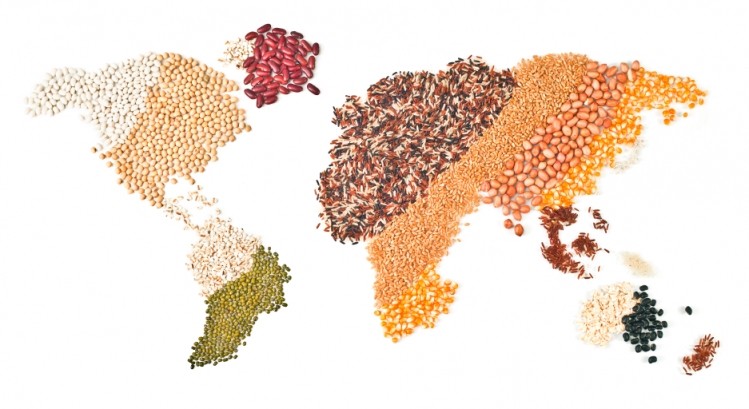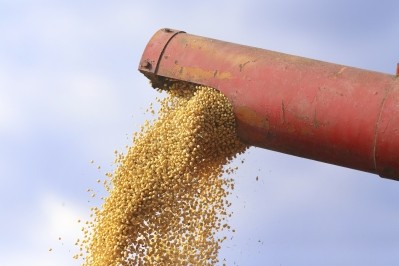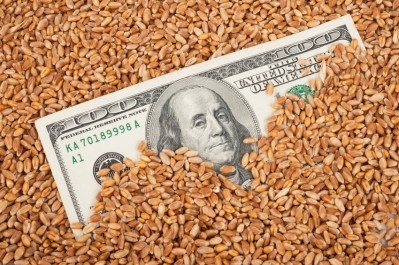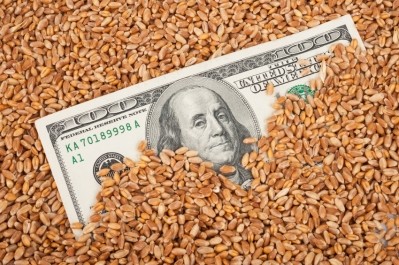USDA report bumps up US corn and soybean production

Updated harvest expectations were released Tuesday in the monthly World Agricultural Supply and Demand Estimates (WASDE) report.
“It was a little bigger than most analysts were hoping for, when you look at corn and soybeans,” said Chad Hart, associate professor of economics and crop markets specialist with Iowa State University Extension. “They were larger crops than the trade was expecting, they were expecting to see it bumped up some, but it increased even more than that.”
The overall corn crop production has been increased by 99m bushels and the national average yield per acre was boosted by 1.3 bushels to 169.3 bushels, officials said. The amount remains slightly below last year’s record.
Overall soybean amounts are forecast for a record 3.98bn bushels, up 93.6m from higher yields. Soybean crush has been increased 10m bushels from improved meal exports.
The soybean yield was boosted by about 1.1 bushels an acre to a predicted 48.3 bushels an acre, said the US agency. Gains predominantly stemmed from growth in Iowa, Illinois and Minnesota.
Illinois marked the dividing line for crop bounty as the corn expectation was lowered while soybeans increased, Hart told FeedNavigator. The state marked a boundary line between states that had lower yields and those recording record crops.
Crop specifics
In corn, the expected domestic use has been dropped by 50m bushels, though there is a 25m bushel boost expected for anticipated feed and residual use, said USDA officials. The uptick in feed usage is not expected to completely offset a reduction of 75m bushels of corn used for ethanol production.
Instead there is expected to be an increased use of domestic sorghum for ethanol production, they said.
Corn ending stocks are forecast to be 1.76bn, up about 199m bushels, they said. End-of-year stocks are set to be 29m bushels above what was seen in 2014-15. And, the season average corn price was dropped by 15 cents for 2015/16 to a range of $3.35 to $3.95 a bushel.
Soybean ending stocks have been raised 40m bushels, and if realized, would be the largest since 2006-07, they said. However, prices for both 2015-16 soybeans and soybean meal have been lowered, with soybeans dropping to a range of $8.15 to $9.65 and with soybean meal losing $10 for a season average range of $300-340 a short ton.
Wheat ending stocks have been increased in the US by 50m bushels for a supply around 911m, officials said. The expected price per bushel has been lowered 5 cents to a range of $4.80 to $5.20.
“What we saw USDA do was move these prices to where the market was already trading,” Hart said. “The market has been trading below USDA’s previous estimates.”
However, Christopher Hurt, professor of agricultural economics at Purdue University, said it is unclear if current prices mark the bottom for feed crop markets.
“Feed prices are really substantially lower over the last three, four years but have we reached the low yet?” he said. “Some of our thinking was the 2014 corn crop would be the first of the commodities to reach its low and then begin to march up, but this takes that away and the same with soybeans and soybean meal continuing to step down through 2015 – where’s the bottom? We don’t know yet.”
Weather likely will be the first factor that could change the direction for crop prices, as it can be difficult to have acres taken out of production even when there is a good crop supply established, he said.
Currencies for several of the US’s trading partners like Japan, Mexico and China are down or flat compared to the strength of the US dollar, he said.
“The big issue is exchange rates, and the second issue is there’s plenty of grain around the world,” he said. “When competitors have grain and corn to sell it’s going to be a struggle.”
Exports and global market
Total corn use for 2015-16 is expected to be lower and exports are anticipated to be down about 50m bushels, said USDA officials. Export sales and shipments are lagging behind previous years.
The amount of corn on the global market has been increased as the amount of China’s beginning stock has been bumped up 18.8m tons for 2015-16, they said.
“The other thing that was a surprise, was USDA did make some fairly large adjustments for corn in China,” said Hurt. “They reduced the amount of feed use in China and have put that into Chinese inventory, so that number is pretty large.”
However, he said, there is always some flexibility to the feed stock in China as exact details aren’t known. “This basically puts China with about 50% of a full year’s usage, but these are USDA’s numbers so what do they have? We don’t really know,” he added.
Soybean exports are expected to increase with the additional supplies, officials said. Global soybean production is expected increase to 321.0m tons, even with a drop in crops for India, South Africa and Uruguay.
“Partly offsetting the increase in China is a 7m ton reduction for 2015-16 Brazil corn beginning stocks,” they said. “Brazil corn feeding is raised for 2006-07 through 2011-12.”
Globally, the grain production totals for 2015-16 have been increased by about 2.3m tons primarily based on the bump in US corn, officials said. However, crops also increased for Argentina and Brazil, though they dropped for Ukraine, South Africa, India and the EU.
The US wheat export has been reduced by 50m bushels marking the lowest level since 1971-72, they said. However, the global wheat supply is predicted to hit a third consecutive record at 733.0m tons.
US sorghum exports are projected down about 105m bushels, however higher domestic use is expected in ethanol production, feed and residual use, they said.
“Global sorghum production is lowered slightly with a reduction for Mexico more than offsetting the US increase,” they said. “Higher EU barley production is mostly offset by a reduction for Russia. EU oats and rye production are each raised slightly, but India millet is lowered.”
To watch
The December report won’t offer a change to production, said Hart, so the focus for the next report is on crop demand.
The market will be looking to see if there continues to be a downward trend in exports and will look to see what crops are going into ethanol production, he said.
He said animal producers have multiple choices, at the moment, along with the ability to mix a high-quality but inexpensive ration.










